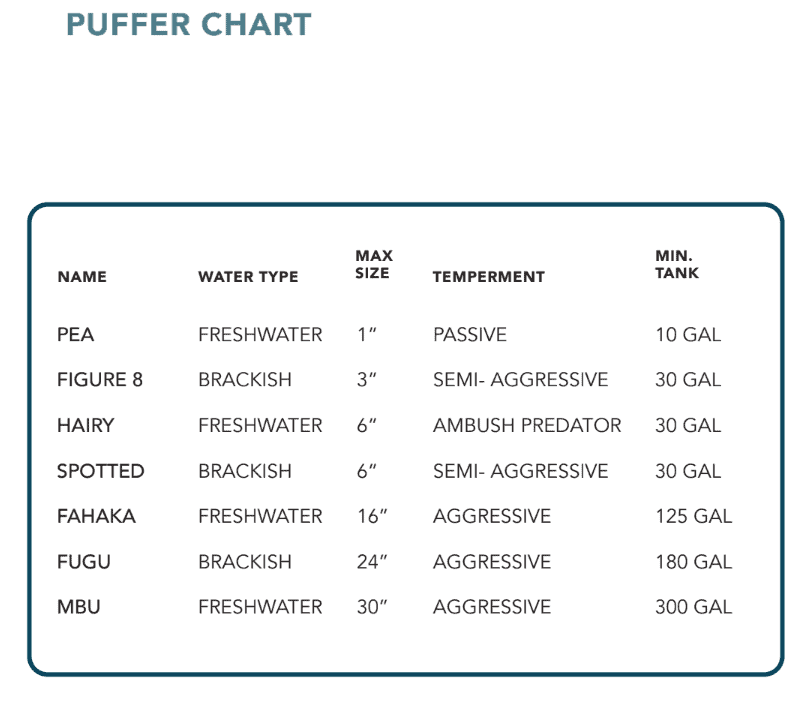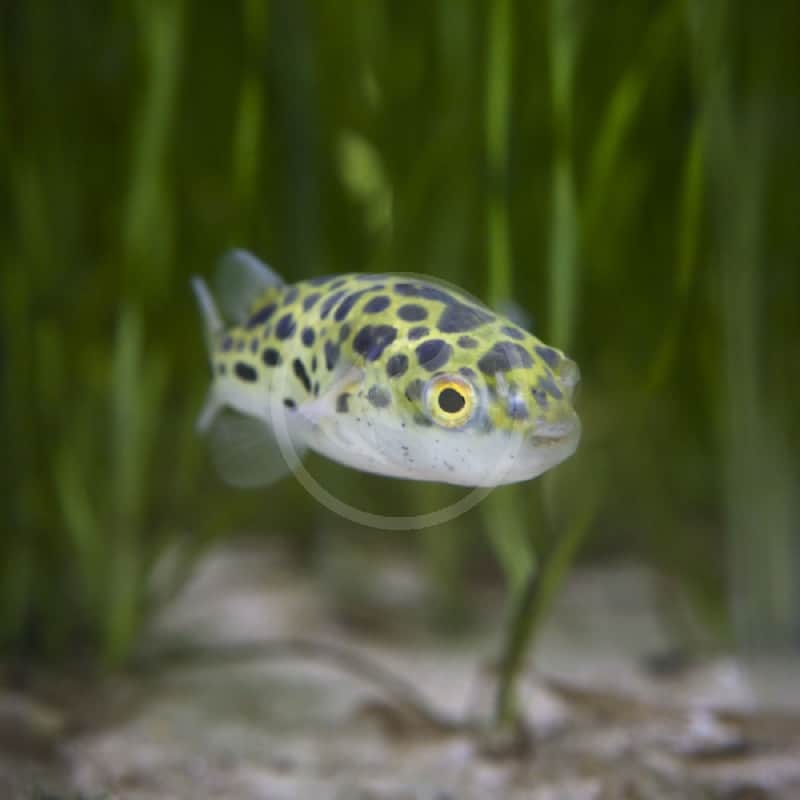We are delighted in your interest in “freshwater” puffers. Puffers can be very entertaining and rich in personality. This Blog post will provide husbandry tips to help you properly care for and house a puffer. We say “freshwater” with quotation marks because not all puffers that are often kept in freshwater when purchased can stay in freshwater permanently. Some of the puffers listed are considered brackish. This means that they require salt in their aquarium. As the puffer matures, its health or energy may decline if a certain concentration of salt is not maintained or increased. When it comes to brackish puffers, one cannot introduce salt too soon.
SET-UP
Puffers are not considered hardy. Puffers should NEVER be the first introduction to a newly set up aquarium. They are scale-less, amplifying their sensitivity to water chemistry and diseases. An aquarium for a puffer should be thoroughly cycled (refer to our New Tank Syndrome handout) before the puffer can be introduced. Not all puffers will be at their full adult size at time of purchase (please refer to chart below). You may choose to start your puffer in a smaller tank, but it is important to know you must upgrade your tank accordingly as it grows.
SALT CONCENTRATIONS
FRESHWATER: 0 to 1 TABLESPOON PER 5 GALLONS
BRACKISH: 3 TABLESPOONS PER 5 GALLONS to 1 TABLESPOON PER GALLON
SALTWATER: 1/2 CUP PER 1 GALLON

ENVIRONMENT
All of the puffers we have listed can live in Lake Michigan tap water. 1 tablespoon of non-iodized salt per 5 gallons of water is recommended for each at the very least. Temperature should be 76 F- 80 F. Live plants can be kept in tanks with true freshwater puffers, but not with brackish puffers. Dense decor is valuable when keeping other fish with puffers to help minimize aggression. Puffer fish are not invertebrate safe (i.e. shrimp, snails, or crabs).
COMPATIBILITY
Most puffers are considered aggressive, but to what degree is often on an individual basis making their compatibility with other fish variable. Use caution when selecting tank mates for a puffer. Only one puffer per aquarium is recommended as they are intolerable of each other. Pea puffers are an exception – they do not mind each other in a large enough aquarium (greater than 10 gallons) and generally do not conflict with most tank mates.
DIET
Puffers are carnivores and will typically only eat live or frozen foods. Good options include: shrimp, crabs, clams, snails, earth-worms, krill, mysis shrimp, plankton, blood worms, and black worms. All puffers have beaks and routinely need to eat crunchy, hard-shelled foods in order to help keep this from overgrowing.






